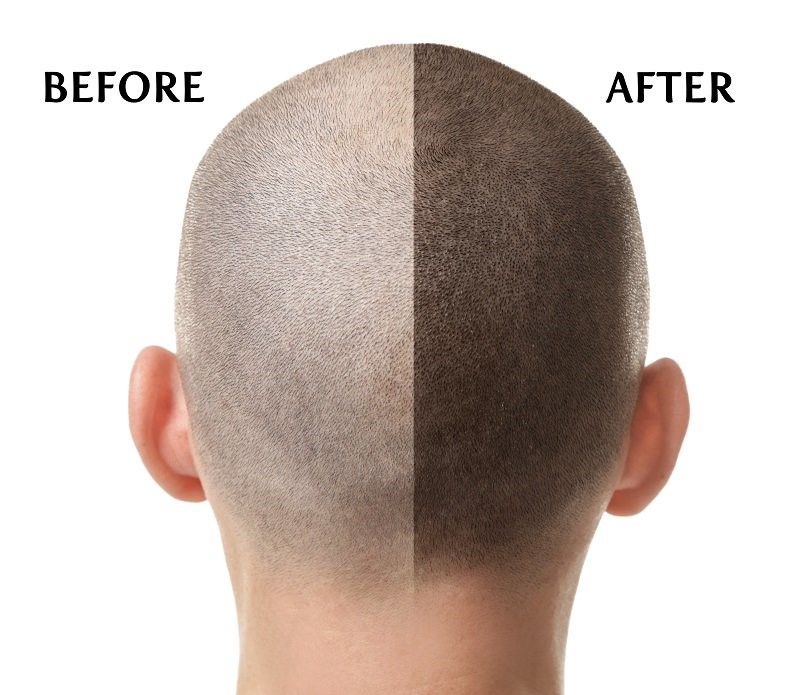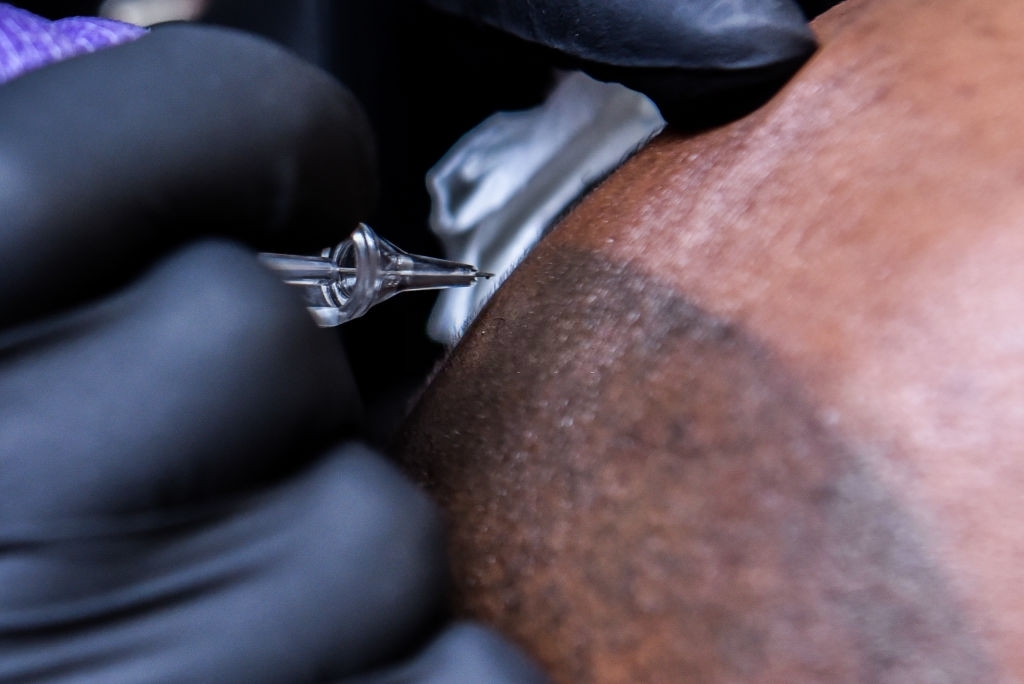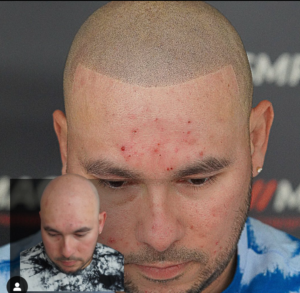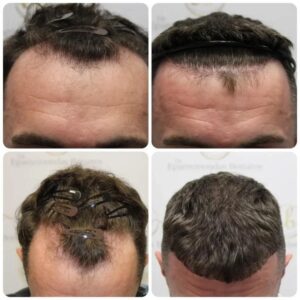The thought of looking at the mirror to see no hair in some part of your head can be annoying. Even when you don’t want to think about it, it comes to mind occasionally, which can be really stressful. Worry no more because an SMP session can offer the ideal solution to your hair loss.
Having said that, it is essential to know that SMP won’t restore your lost hair. It is a simulation of natural hair follicles to restore your youthful look. Isn’t that what you want? It is achievable with a professional SMP artist. You are aware of SMP treatment now. So, do you visit a scalp artist without preparing yourself? No, that isn’t good enough. It would be best to familiarise yourself with some things associated with micropigmentation processes. Knowing these things helps you to prepare well for your first hair SMP session.
Table of Contents
Key Takeaway
Hair SMP session is a mechanism that involves using a microneedle to attach pigments to the scalp in other to mimic your natural hairline. This is not restoring natural hair but filling your scalp with pigment where necessary.
It is a new method to keep hairs on your head for up to three years. Preparing for a hair SMP session requires cutting your hair, moisturising your skin, and keeping your blood in good condition.
How Many SMP Sessions Are There?
Although the treatment is typically completed in 3 sessions, each with its specific purpose and goals, the number of sessions required for SMP may vary depending on the individual’s needs and goals.
In general, most clients require 3-4 sessions for optimal results. However, some people may only need 2 sessions, while others may require 5 or more. Your SMP practitioner will determine the total number of sessions during the initial consultation.
These sessions are designed to create a natural-looking, realistic result and to allow the scalp time to heal between sessions.
The 3 sessions involved in SMP are:
1. Initial Session
This session is the first step in the SMP process and involves the practitioner making a series of small dots on the scalp. This session is crucial in determining the overall look and style of the treatment, as the practitioner will assess the natural hair growth pattern and hairline to determine the placement of the dots.
The initial session is also used to determine the right shade of pigment for the client, as the color needs to match the existing hair color as closely as possible.
2. Second Session:
The second session is usually scheduled 4-6 weeks after the initial session. During this session, the practitioner will build upon the work completed in the first session, adding more dots and further defining the hairline.
The second session is crucial in creating a more natural-looking result and filling in any gaps that may have been left from the initial session.
3. Final Session:
The final session is usually scheduled 4-6 weeks after the second session. During this session, the practitioner will finalize the SMP treatment, adding the final layer of pigment and making any final adjustments. The desired result is obtained in this final session, ensuring that the SMP treatment has the best possible outcome.
In conclusion, the 3 SMP sessions are designed to create a natural-looking, realistic result and to allow the scalp time to heal between sessions. Each session builds upon the previous one, ensuring that the final result is optimal and that the client is satisfied with the outcome.
Why Does SMP Take 3 Sessions?
SMP typically takes 3 sessions for several reasons. Firstly, the scalp needs time to heal between sessions, and multiple sessions allow for adequate healing time.
Secondly, each session builds upon the previous one, allowing the practitioner to add more pigment and create a more natural-looking result.
Finally, multiple sessions allow the practitioner to adjust and fine-tune the results to ensure the best possible outcome for the scalp micropigmentation session.
What should you know about SMP Session?
1. Have your Hair Cut Before the Session
To avoid redness and pains, it is advisable to cut your hair a day before your SMP session. Early preparation makes the processing easy, and you don’t have to worry about sourness. Many people made the mistake of doing it in the morning. Primarily scalp micropigmentation doesn’t hurt if you follow due process.
It doesn’t matter if you use a clipper, foil shaver, or razor; ensure that you do it a day before. It is the best way to get yourself ready for the process.
2. Soften your Scalp
One of the ways to make your SMP session easy is to moisturize your scalp. It will be difficult for the microneedle to get the job done. Applying moisturizer to your head often allows the needle to get through the critical area. There has been an ambiguity surrounding how to lighten SMP. You can rest assured that you will be getting the best treatment with easy penetration to fill your scalp.

3. Research and Choose your Preferred Hairline
Don’t wait till you get to the artist before you decide on the hairline you prefer. Begin by searching online for different hairlines available. It could be receded or defined; ensure you make of choice ahead. The most important thing is getting the best look.
You can search on social media, YouTube, and Google. Getting information is easier with the internet. Don’t know what to expect? Keep calm, as you will find something that suits your personality.
4. Don’t get your blood thin
If you are preparing for an SMP session, you must not take anything that can make your blood dilute with pigment. It will cause bleeding, which isn’t suitable for microneedle processing. For this reason, energy drinks, aspirin, and coffee are not good for scalp micropigmentation.
The adverse effect of these liquids is why we emphasized that you shouldn’t take stiff drinks before the SMP session.
5. SMP Pre-care is Essential
SMP sessions can be draining. Keeping yourself strong before you enter the artist theatre is ideal. Eat good food but avoid energy drinks. Fill your stomach with an energy-giving meal a few hours before the treatment begins. Without adequate energy to pass through this process, you will probably faint due to weakness.
The treatment doesn’t end after the SMP session. You will probably get exhausted after a hundred rounds of microneedle in your head. So, it would be nice to have something to eat to regain lost energy.
What to Do If SMP Faded After A Week?
If your SMP results have faded after only a week, it may be due to poor aftercare or poor quality pigments. It is essential to follow the aftercare instructions provided by your SMP practitioner to ensure the longevity of your results.
If the fading was due to poor quality pigments, you should have the treatment redone by a different practitioner.
If you are unsure, it is best to schedule a follow-up appointment with your SMP practitioner to assess the situation.
What to Do If SMP Dots Shrink?
If your SMP dots have shrunk, it may be due to improper aftercare or poor quality pigments. Like with fading, it is crucial to follow the aftercare instructions provided by your SMP practitioner to ensure the longevity of your results.
If the shrinkage was due to poor quality pigments, you might need to have the treatment redone by a different practitioner like MacSmp.
Conclusion
It is a myth that an SMP session is scary and painful. Following the rules can keep you in the right frame for the treatment. Failure to adhere to them is the reason why many people find it challenging. You shouldn’t skip any of the pre-treatment tips if you want to have a memorable experience.
Only on rare occasions do people feel severe pain because of the treatment. Fortunately, micropigmentation healing process is pretty fast. However, you can choose not to be among the few that experienced excruciating pain. All you need to do is follow the hints accordingly.



